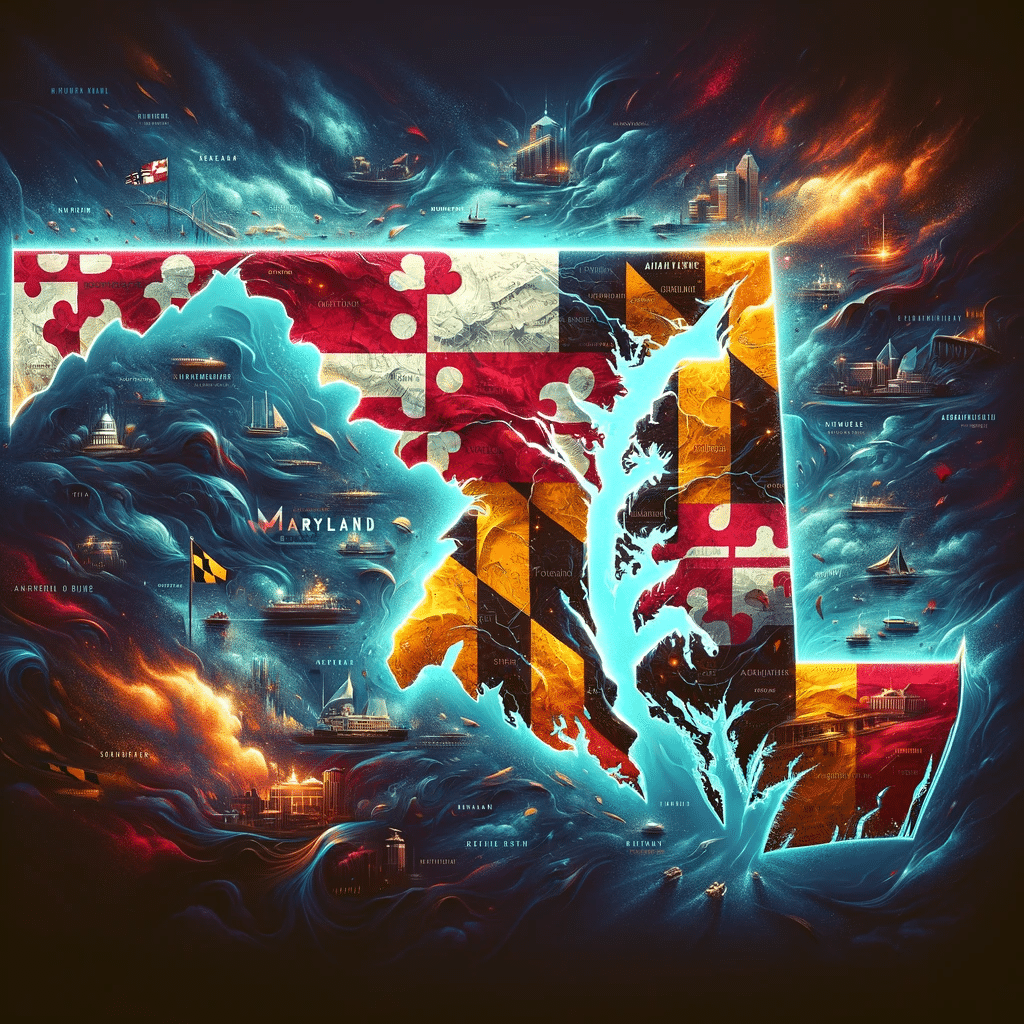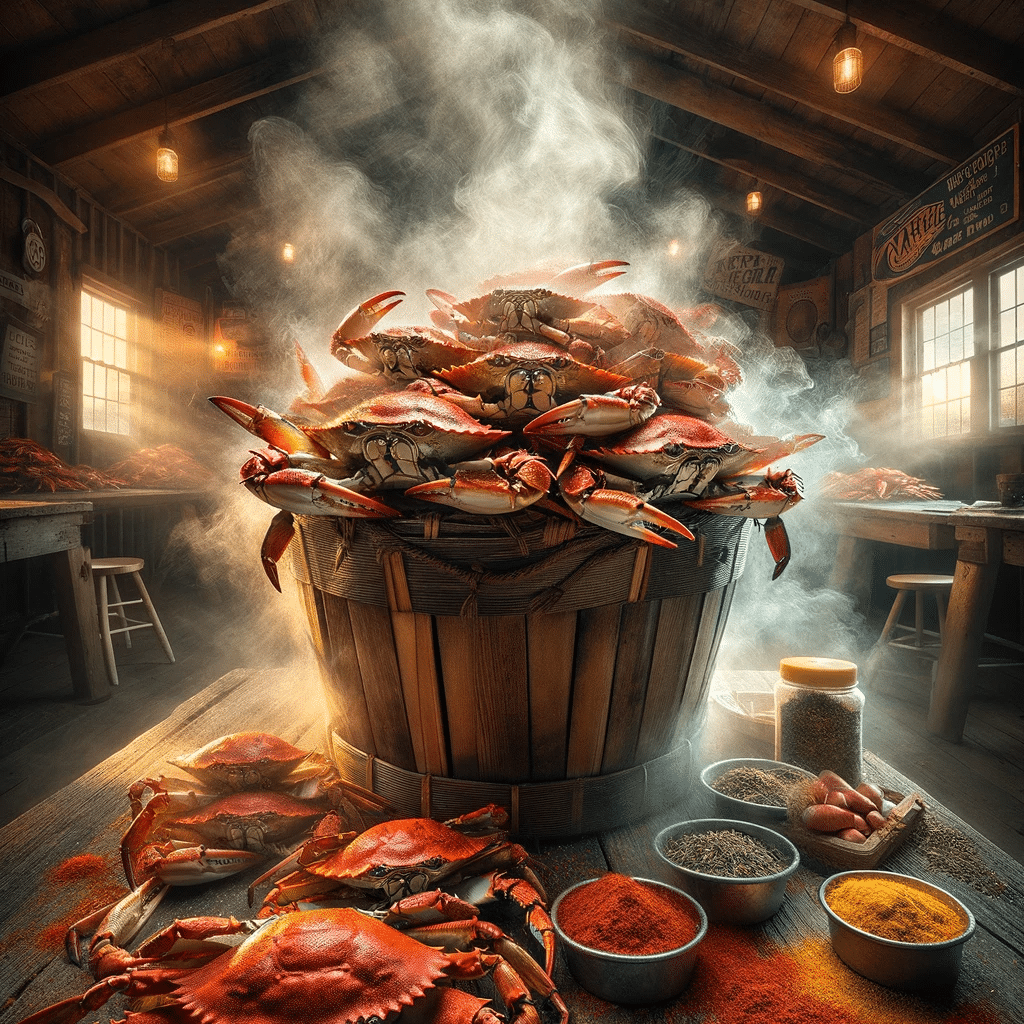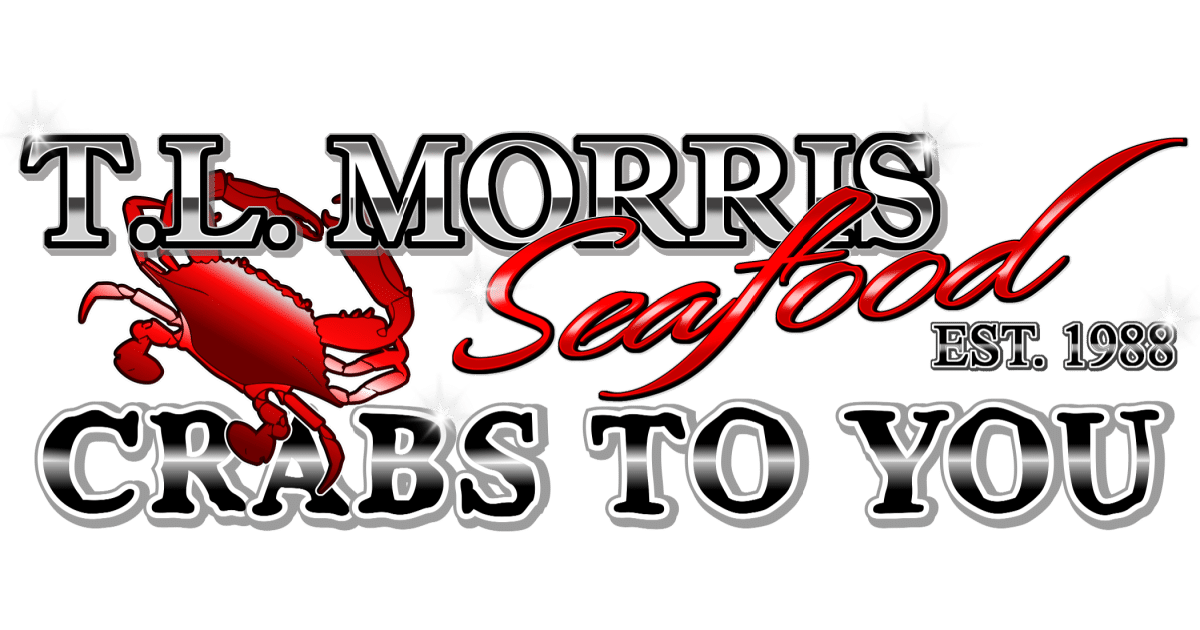Maryland, known as the “Old Line State,” is not only renowned for its historical significance but also for its rich culinary heritage. This Mid-Atlantic state has long been a melting pot of diverse cultures, which has greatly influenced its gastronomic landscape. From the bustling streets of Baltimore to the quaint coastal towns along the Chesapeake Bay, Maryland prides itself on producing and showcasing delectable dishes that reflect its unique blend of traditions.
Brief overview of Maryland’s rich culinary heritage
Maryland’s culinary heritage is a tapestry woven from various cultural threads. Native American tribes like the Piscataway and Powhatan imparted their wisdom in harvesting local ingredients while European settlers, particularly English colonists, brought their traditional recipes and cooking techniques. Moreover, Maryland’s proximity to the Chesapeake Bay has played a significant role in defining its food culture.
The abundance of seafood provided by this vast estuary has become an integral part of Marylanders’ daily lives. From succulent oysters to plump clams and scallops, no other crustacean holds as esteemed a place on tables across Maryland as the iconic blue crab.
Introduction to the iconic Maryland blue crabs
The majestic blue crab (Scientific name: Callinectes sapidus) reigns supreme in Maryland’s culinary realm. With its striking azure hue and distinctive claw shape, it is instantly recognizable and deeply ingrained in local culture.
The blue crab thrives along the Atlantic coast but finds its true home in the brackish waters of the Chesapeake Bay. Beyond being a culinary delight, blue crabs are beloved for their sweet, succulent meat and have become a symbol of Maryland’s seafood bounty.
Their significance goes beyond the dinner table, as they permeate the state’s identity. Marylanders take great pride in their crabbing traditions, passing down techniques through generations and celebrating crab feasts that bring communities together.
In the subsequent sections, we will delve into the world of Maryland blue crabs, exploring their habitat, catching methods, and their crucial role in both the ecosystem and culinary scene. We will also uncover the secrets behind iconic crab feasts and discuss other delectable dishes that showcase these exquisite crustaceans.
ONLINE SHIPPING
We’re excited to announce that we will soon be offering online shipping for our premium Maryland Blue Crabs! This new service will allow you to enjoy the fresh, succulent taste of our crabs from the comfort of your own home, no matter where you are. To make sure you’re among the first to experience this convenience, we invite you to visit our website and sign up for our notification email. By doing so, you’ll be promptly informed as soon as our shipping service goes live. Don’t miss out on this opportunity to have the finest Maryland Blue Crabs delivered straight to your doorstep. Click the button to visit the store to sign-up! 🦀📦🌍
Description of the species (scientific name, appearance, and unique characteristics)
Maryland blue crabs, scientifically known as Callinectes sapidus, are renowned for their distinct flavor and vibrant appearance. These crustaceans possess a broad carapace that ranges in color from a mottled dark green to a brilliant blue hue, often showcasing hints of red along their claws. The male crabs have vibrant blue claws, while the females’ claws are tipped with red.
Mature males also feature a characteristic “Washington Monument” shape on their underside. One of the most distinguishing features of Maryland blue crabs is their powerful pair of pincers.
These formidable claws allow them to defend themselves against predators and crush the shells of mollusks and small prey. Additionally, the female blue crabs have narrow abdominal plates, while the males boast wider plates that resemble an inverted T-shape.
Habitat and distribution along the Chesapeake Bay
Maryland blue crabs are primarily found along the picturesque shores of the Chesapeake Bay—a sprawling estuary renowned for its rich biodiversity. The Chesapeake Bay’s brackish waters provide an ideal habitat for these iconic crustaceans due to its mix of fresh river water and salty seawater. Blue crabs thrive in areas with submerged aquatic vegetation (SAV) where they can find shelter from predators and molt safely.
They prefer sandy or muddy bottoms where they can burrow during hibernation or escape extreme temperatures. The distribution of Maryland blue crabs within the Chesapeake Bay is not evenly spread throughout its vast expanse.
Generally, these crabs inhabit shallow waters near marshy areas but gradually move towards deeper channels as they grow older. As migration patterns change with seasons and environmental factors like temperature variation occur, understanding their movement provides valuable insights into managing crab populations effectively.
Importance of blue crabs to Maryland’s economy and culture
Maryland blue crabs hold immense economic and cultural significance for the state. Crabbing serves as a vital industry, supporting local fishermen, seafood wholesalers, and restaurants. The commercial harvest of blue crabs not only contributes to the region’s economy but also plays a crucial role in sustaining the livelihoods of many Marylanders.
Beyond its economic importance, blue crabs are deeply ingrained in Maryland’s cultural fabric. Crabbing is a treasured pastime for residents, with families and friends often gathering around crab feasts during summer months.
Local communities organize crab festivals and competitions that celebrate the craft of catching, cooking, and picking these delectable crustaceans. The blue crab has become an iconic symbol of Maryland pride, embodying the state’s unique coastal heritage and serving as a source of camaraderie among its residents.

III. Catching Maryland Crabs
Traditional crabbing methods
Crabbing in Maryland is a longstanding tradition that relies on various tried-and-true methods. One common method is the use of trotlines, which consist of a long line with baited snoozes attached at intervals. These lines are set in the water and left for some time, allowing crabs to be lured to the bait before they are hauled in.
Another popular technique involves using crab pots, which are wire cages with entrances but no exits that allow crabs to enter but not escape. Additionally, hand-lining is a method that requires patience and skill.
A hand line consists of a long string with a weighted end and baited hook attached. The line is slowly lowered into the water until it reaches the desired depth, then gently pulled up to entice crabs to grab onto the bait before being lifted out of the water.
Explanation of the crabbing season and regulations in Maryland
Maryland has specific regulations in place to ensure sustainable crab populations and protect their breeding cycles. The crabbing season typically begins around April or May, when water temperatures rise, signaling increased crab activity.
However, exact dates can vary depending on environmental factors and government-imposed restrictions. To maintain healthy crab populations, Maryland implements size limits for harvested crabs.
Female crabs must measure at least 5 inches across their back (known as “Sooks” or “Sallys”) before they can be kept by recreational or commercial crabbers. Regulations also dictate how many crabs an individual can catch per day to prevent overfishing and encourage responsible harvesting practices.
Insight into the art of “crab picking” – separating meat from shell
Once caught, Maryland blue crabs undergo a delicate process known as “crab picking.” This art form requires patience, dexterity, and a keen eye for extracting the succulent meat from the shell. The process begins by removing the crab’s top shell, also known as the carapace.
Skilled crab pickers then meticulously separate the claw meat and lump meat from its various compartments. The meat is often used in a variety of dishes, including crab cakes, soups, and dips.
Crab picking can be time-consuming but is considered an essential part of fully enjoying Maryland’s beloved blue crabs. It is an intricate task that locals take great pride in perfecting, as it allows them to savor every morsel of delicious crab meat while ensuring minimal waste.
Catching Maryland crabs involves a range of traditional methods such as trotlines, crab pots, and hand-lining. These methods have been refined over generations to maximize catch rates while respecting sustainable practices.
Understanding the regulations surrounding Maryland’s crabbing season is crucial for preserving healthy crab populations and maintaining ecological balance in Chesapeake Bay. Moreover, the intricate skill of “crab picking” allows enthusiasts to fully appreciate the delectable taste of Maryland’s renowned blue crabs.
The Chesapeake Bay: A Crucial Ecosystem for Blue Crabs
Blue crabs, a beloved symbol of Maryland’s culinary heritage, rely heavily on the Chesapeake Bay for their survival. This expansive estuary plays a vital role in supporting blue crab populations through its unique combination of habitat features and resources. The brackish waters of the Chesapeake Bay provide an ideal environment for the growth and propagation of blue crabs, making it a crucial ecosystem for their sustainable existence.
Role of the Chesapeake Bay in supporting blue crab populations
The Chesapeake Bay acts as both a nursery and feeding ground for blue crabs. Its sheltered bays, marshes, and seagrass beds offer protection to young crabs during their early stages of development.
The abundance of food sources like plankton, small fish, and decaying organic matter within the bay sustains these crustaceans throughout their lifecycle. Additionally, the bay’s complex network of tributaries provides important migration routes for adult crabs moving between spawning and feeding grounds.
Discussion on environmental factors affecting crab habitat
Several environmental factors influence the habitat quality for blue crabs in the Chesapeake Bay. Water quality is paramount; high levels of dissolved oxygen are essential to support not only crab survival but also their growth and reproduction.
Temperature plays a crucial role as well since it affects various aspects such as molting frequency, metabolism rates, and spawning behavior. Additionally, salinity levels need to remain within an optimal range to ensure proper osmoregulation in blue crabs.
Other factors that can affect crab populations include changes in tidal currents that impact larval dispersal patterns and alterations to natural shoreline habitats due to human development. Nutrient pollution from agricultural runoff can lead to excessive algae blooms that deplete oxygen from water bodies during decomposition events, negatively impacting crab habitats.
Conservation efforts to preserve blue crabs and their ecosystem
Recognizing the importance of blue crabs to Maryland’s economy and culture, various conservation efforts have been implemented to protect both the species and its ecosystem. These include regulations on crabbing seasons, size limits, and catch limits to prevent overfishing.
Maryland’s Department of Natural Resources also employs methods such as stock assessments, scientific research, and the use of hatcheries to maintain sustainable crab populations. Collaboration between government agencies, environmental organizations, farmers, and local communities has resulted in initiatives focused on reducing nutrient pollution entering the bay.
Efforts are being made to implement best farming practices that minimize fertilizer use and control runoff. Restoration projects aimed at improving shoreline habitats and promoting seagrass growth are also underway.
Through these conservation efforts, Maryland aims to preserve the delicate balance of its cherished blue crab populations while safeguarding the health of the Chesapeake Bay as a whole. By understanding the environmental factors impacting blue crabs’ habitat and implementing sustainable practices, we can ensure that future generations can continue enjoying this iconic culinary treasure for years to come.
Iconic Crab Feasts: A Maryland Tradition
Description of a traditional “Maryland Crab Feast”
A Maryland crab feast is a cherished tradition that brings families, friends, and communities together to celebrate the bounty of the Chesapeake Bay. Picture long picnic tables covered with brown paper, adorned with J.O. Seasoning & Old Bay seasoning cans scattered across for easy access. The star of the feast is a heaping mound of steamed Maryland blue crabs, their vibrant red shells glistening in the summer sun.
The atmosphere at a crab feast is lively and convivial, as guests gather around the table, eager to indulge in this beloved culinary experience. Time seems to slow down as people engage in animated conversations while savoring every succulent bite.
Laughter fills the air, mingling with the tantalizing aroma of steamed crabs. It’s a sensory journey that celebrates Maryland’s coastal heritage and fosters a sense of community.
Explanation of the tools used during a feast (mallets, knives, paper towels)
To fully enjoy a Maryland crab feast, one must be equipped with an array of tools designed specifically for tackling these delectable crustaceans. The most indispensable tool is the trusty wooden mallet—a symbol synonymous with cracking open those prized crab shells.
With finesse and precision, diners use these mallets to gently tap along the outer edges or strike squarely on those stubborn claws to reveal sweet pockets of meat within. Accompanying the mallets are sharp knives that aid in extracting every bit of succulence from these blue treasures.
These knives are not only useful for separating body sections but also come in handy when opening claw segments or carefully prying out delicate lump meat from crevices within the shell. Additionally, paper towels are ubiquitous on every table at a crab feast—essential for wiping buttery fingers, cleaning up spills, and providing a convenient resting place for discarded shells.
Insight into typical side dishes served with steamed crabs (corn on the cob, coleslaw)
No Maryland crab feast is complete without an array of delectable side dishes to complement the star of the show. A perennial favorite is fresh corn on the cob, boiled until tender and served with a generous slather of butter.
The sweetness of the corn perfectly balances the briny richness of the crabs, creating a harmonious symphony of flavors on one’s palate. Another popular accompaniment is coleslaw—a refreshing and crunchy salad that provides a cool respite from the spicy kick of J.O. Seasoning.
Maryland-style coleslaw typically features shredded cabbage, carrots, mayonnaise-based dressing infused with tangy vinegar or lemon juice, and a hint of celery seed for added depth. Its crisp texture and zesty profile cleanse and invigorate taste buds between bites of succulent crab meat.
These side dishes not only add variety to the feast but also enhance the overall experience by offering contrasting flavors and textures that complement each other harmoniously. Together, they form an irresistible culinary symphony that elevates Maryland crab feasts from simple meals to unforgettable celebrations of local traditions and coastal cuisine.
Crab Culinary Delights: Beyond Steamed Crabs
Maryland Crab Soup: The epitome of comfort food
Maryland crab soup is a beloved dish that captures the essence of the region’s culinary heritage. This hearty soup is renowned for its rich flavors and abundance of tender blue crab meat.
The key ingredients that make up this delectable creation include diced tomatoes, vegetable or chicken broth, onions, celery, carrots, Old Bay seasoning (a quintessential Maryland spice blend), and generous amounts of succulent crab meat. Additional elements like lima beans, corn kernels, and potatoes can also be incorporated to enhance the texture and flavor profile.
The historical significance of Maryland crab soup cannot be underestimated. Dating back to the early 19th century, this dish was born out of necessity as a way to use leftover crabs.
Over time, it evolved into a regional favorite and eventually became an iconic symbol of Maryland’s culinary landscape. Each region within Maryland has its own variation of this soup—some prefer a spicier version with added hot sauce or chili flakes while others opt for a milder rendition with a focus on highlighting the sweetness of the crab meat.
Crab Cakes: The crown jewel of seafood delicacies
When it comes to showcasing the true artistry of preparing seafood in Maryland, nothing quite compares to the world-famous crab cakes. These delectable treats are made by combining lump crab meat with breadcrumbs or crushed crackers as a binder along with eggs and various seasonings such as mustard, Worcestershire sauce, parsley, and Old Bay seasoning.
The mixture is carefully shaped into patties before being gently sautéed or broiled until golden brown. Maryland takes immense pride in its distinctive style when it comes to creating these culinary masterpieces.
The emphasis is always on using high-quality crab meat and minimal fillers to allow the natural sweetness and delicate texture of the crab to shine through. The result is a sublime balance of flavors, where each bite offers a harmonious blend of succulent crab meat and perfectly seasoned accompaniments.
Conclusion
As we conclude our journey into the world of Maryland crabs, it is evident that these crustaceans hold a special place in the hearts and palates of the state’s residents. From steamed crabs enjoyed during lively feasts to iconic dishes like Maryland crab soup and crab cakes, this culinary heritage reflects both tradition and innovation.
The historical significance intertwined with regional variations further underscores the cultural significance attached to these delicacies. The enduring popularity of Maryland crabs serves as a testament to their extraordinary taste and the commitment of local communities towards preserving their ecological importance.
As we explore new ways to appreciate these delightful creatures, let us also embrace sustainable practices that ensure their continued abundance for generations to come. So next time you savor a mouthwatering bite of Maryland blue crab, take a moment to appreciate not only its flavor but also the rich tapestry of history and culture that it represents.
Check out a few of our other blog posts!
Unlock the Mystique of Fresh Oysters: An Enchanting Adventure
When Are Blue Crabs in Season: A Comprehensive Guide


